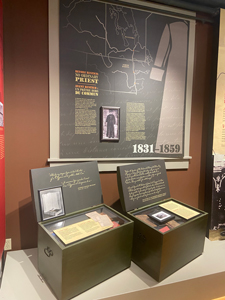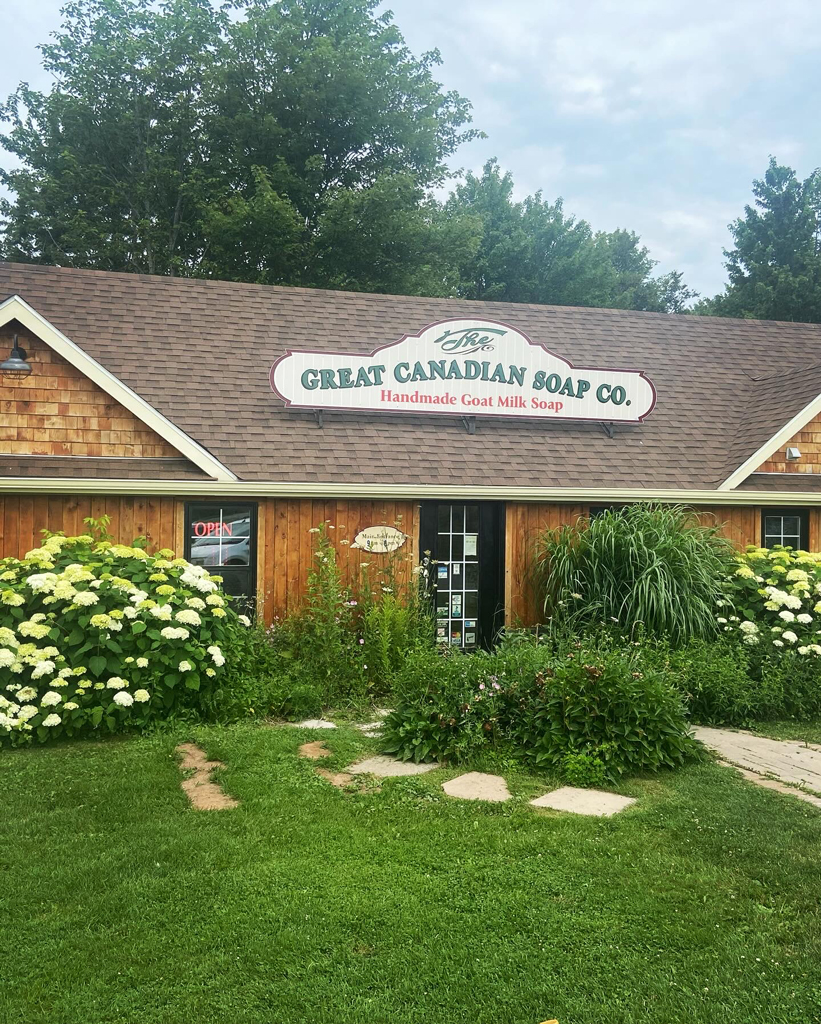Exploring the Farmers Bank Museum in Prince Edward Island: A Glimpse into the Island's Rural History
The Farmers' Bank Museum on Prince Edward Island (PEI) is a captivating destination for history enthusiasts and anyone interested in the island’s agricultural and financial heritage. Situated in the charming community of Rustico, the Farmers' Bank Museum offers visitors a unique opportunity to step back in time and explore the history of one of Canada’s earliest financial institutions. With its rich history and well-preserved exhibits, the Farmers' Bank Museum is a must-visit attraction for those looking to delve into the story of rural life on PEI.
The History of the Farmers Bank of Rustico
The Farmers' Bank Museum commemorates the Farmers' Bank of Rustico, which was established in 1864 by Father Georges-Antoine Belcourt, a forward-thinking priest with a vision to empower the local Acadian community. At that time, access to banking services was limited for rural farmers on PEI, and many were at the mercy of high-interest loans from private lenders. Recognizing this need, Father Belcourt founded the Farmers' Bank of Rustico to provide affordable financial services to the farming community.
The Farmers' Bank of Rustico holds a special place in Canadian history as one of the earliest community-based financial institutions in the country. The bank was owned and operated by the local farmers, making it a true cooperative effort aimed at improving the economic well-being of the community. The Farmers' Bank of Rustico became a model for similar institutions across Canada and played a crucial role in supporting the agricultural development of PEI.

Visiting the Farmers Bank Museum
Today, the legacy of the Farmers' Bank of Rustico is preserved at the Farmers' Bank Museum, which is housed in the original bank building. This historic structure, which dates back to the 19th century, has been carefully restored to its former glory and now serves as a museum dedicated to the history of the bank and the broader story of rural life on PEI.
Visitors to the Farmers' Bank Museum can explore a variety of exhibits that showcase the history of the bank, the life of Father Belcourt, and the role of the Acadian community in the development of the island. The museum’s collection includes original documents, photographs, and artifacts that provide a fascinating insight into the challenges and triumphs of the early settlers who relied on the bank.
One of the highlights of the Farmers' Bank Museum is the reconstructed bank manager’s office, which has been meticulously furnished to reflect the period. This exhibit offers visitors a glimpse into the daily operations of the bank and the important role it played in the local community. The museum also features interactive displays that engage visitors of all ages, making it an educational experience for families and school groups.

The Doucet House: A Companion to the Farmers' Bank Museum
Adjacent to the Farmers' Bank Museum is the Doucet House, another important historic site that complements the museum’s offerings. The Doucet House, one of the oldest remaining Acadian homes on PEI, was originally built in the 1770s and later relocated to its current site to preserve its historical significance. Together, the Farmers' Bank Museum and the Doucet House provide a comprehensive look at the life and times of the Acadian settlers on PEI.
Visitors can tour the Doucet House to gain a deeper understanding of the daily lives of the early Acadians. The house has been restored and furnished to depict a typical Acadian home of the 18th century, complete with period-appropriate artifacts and displays. This immersive experience allows visitors to step into the past and learn about the traditions, challenges, and resilience of the Acadian community.

The Cultural Significance of the Farmers' Bank Museum
The Farmers' Bank Museum is more than just a repository of artifacts; it is a symbol of the ingenuity and determination of the Acadian people who established it. The museum highlights the important role that the Farmers' Bank of Rustico played in empowering the local community by providing them with access to financial services that were otherwise out of reach. This empowerment allowed the farmers of Rustico to improve their livelihoods, invest in their land, and contribute to the growth of the island’s agricultural economy.
The story of the Farmers' Bank of Rustico is also a testament to the broader history of cooperatives in Canada. As one of the country’s earliest examples of a community-owned financial institution, the Farmers' Bank of Rustico paved the way for the development of other cooperative banks and credit unions across Canada. The museum serves as a reminder of the importance of community-led initiatives in shaping the economic and social fabric of rural areas.
Educational Programs and Events at the Farmers' Bank Museum
The Farmers' Bank Museum is dedicated to educating visitors about the history of PEI and the importance of preserving its cultural heritage. The museum offers a variety of educational programs and workshops that cater to different age groups and interests. These programs provide an in-depth look at the history of the Farmers' Bank, the life of Father Belcourt, and the broader context of the Acadian experience on PEI.
In addition to its educational programs, the Farmers' Bank Museum hosts a range of events throughout the year. These events often focus on themes related to agriculture, banking, and Acadian culture, providing visitors with opportunities to engage with the museum’s exhibits in a more interactive and hands-on manner. From heritage festivals to special lectures, the museum’s events offer something for everyone, making it a lively and engaging destination for both locals and tourists.
The Role of the Farmers' Bank Museum in PEI Tourism
The Farmers' Bank Museum is an integral part of PEI’s tourism landscape, attracting visitors who are interested in exploring the island’s rich history and cultural heritage. The museum is conveniently located near other popular attractions, such as the Anne of Green Gables Museum and the beaches of Cavendish, making it an easy addition to any PEI itinerary.
As a key cultural attraction, the Farmers' Bank Museum contributes to the local economy by drawing tourists to the area and promoting the importance of preserving historic sites. The museum’s efforts to educate the public about the history of the Farmers' Bank of Rustico and the Acadian community help to foster a deeper appreciation for the island’s unique heritage.
The Enduring Legacy of the Farmers' Bank Museum
The Farmers' Bank Museum on Prince Edward Island is a treasure trove of history, offering visitors a window into the past and a deeper understanding of the island’s agricultural and financial roots. The museum stands as a testament to the vision and determination of Father Georges-Antoine Belcourt and the Acadian farmers who built the Farmers' Bank of Rustico. Their legacy lives on in the museum’s exhibits, which continue to inspire and educate visitors from around the world.
For anyone interested in the history of Prince Edward Island, the Farmers' Bank Museum is a must-visit destination. Whether you are exploring the exhibits, attending an educational program, or simply soaking in the atmosphere of this historic site, a visit to the Farmers' Bank Museum offers a unique and enriching experience that connects you to the island’s rural heritage and the enduring spirit of its people.
So, if you find yourself on Prince Edward Island, make sure to include the Farmers' Bank Museum in your travel plans. It is a place where history comes alive, where the story of the Acadian community is told with pride, and where the lessons of the past continue to resonate in the present. The Farmers' Bank Museum is not just a glimpse into history; it is a celebration of the resilience, ingenuity, and community spirit that define Prince Edward Island.

The Farmers' Bank Museum in Prince Edward Island (PEI) is a historic site in Rustico that commemorates the Farmers' Bank of Rustico, one of Canada's earliest community-based financial institutions. Established in 1864 by Father Georges-Antoine Belcourt, the bank empowered local Acadian farmers by providing affordable financial services. Today, the museum, housed in the original bank building, showcases exhibits on the bank's history, Father Belcourt’s life, and Acadian culture. Adjacent to the museum is the Doucet House, an 18th-century Acadian home that complements the museum's narrative. The museum also offers educational programs, workshops, and events, making it a key cultural and historical attraction on PEI. Visitors can explore the rich agricultural and financial heritage of the island and gain insights into the resilience and community spirit of the Acadian people.









